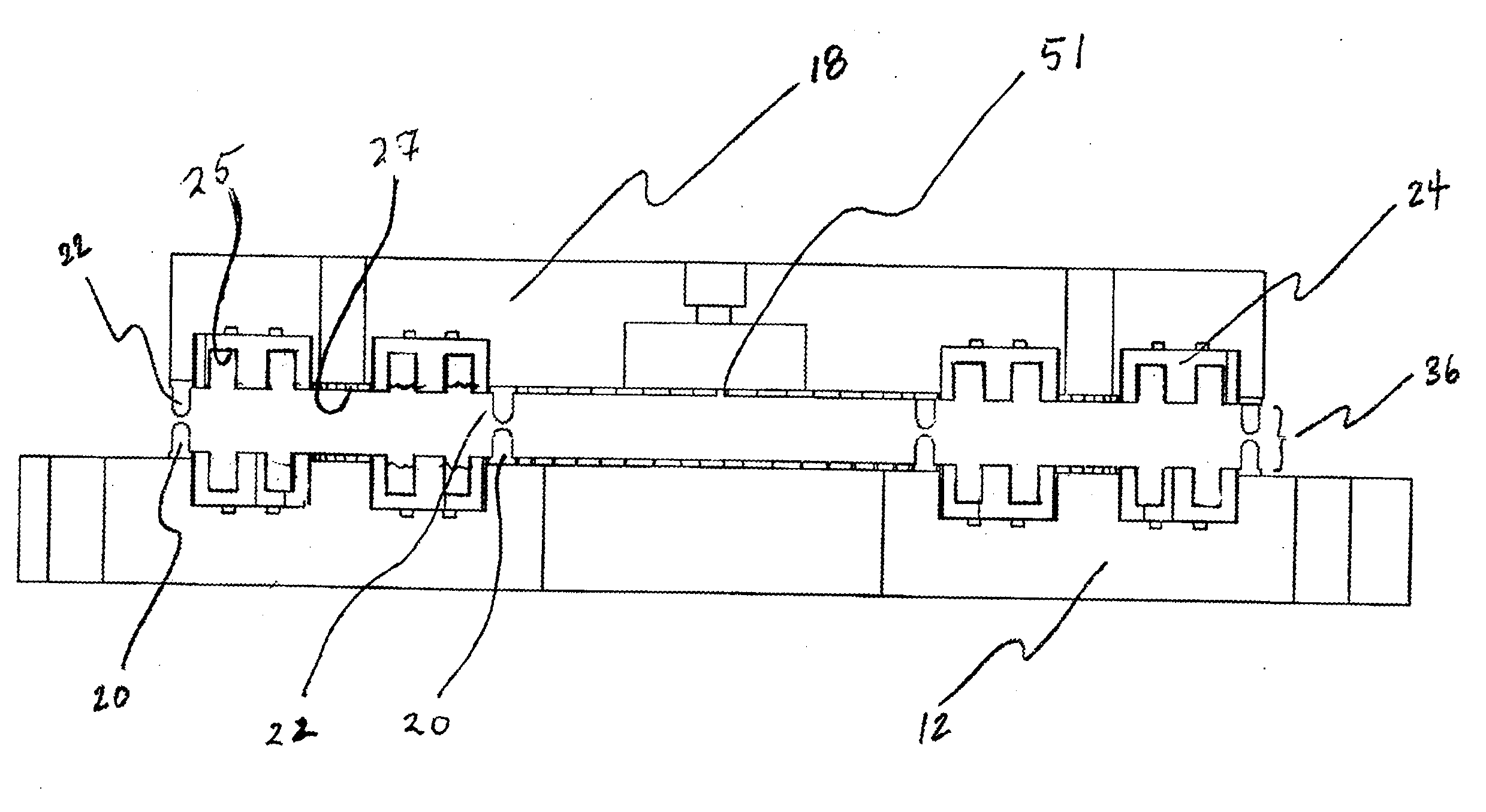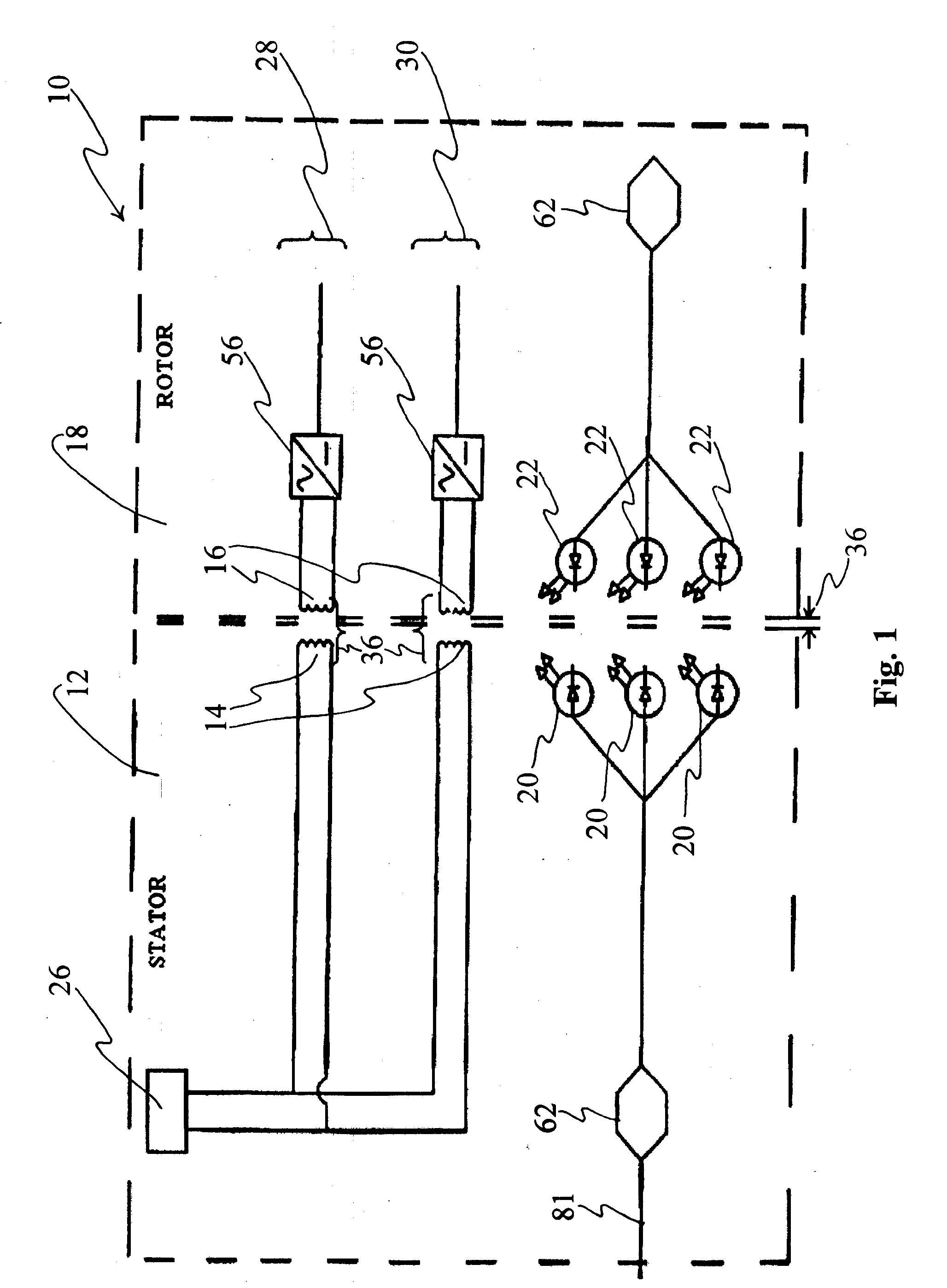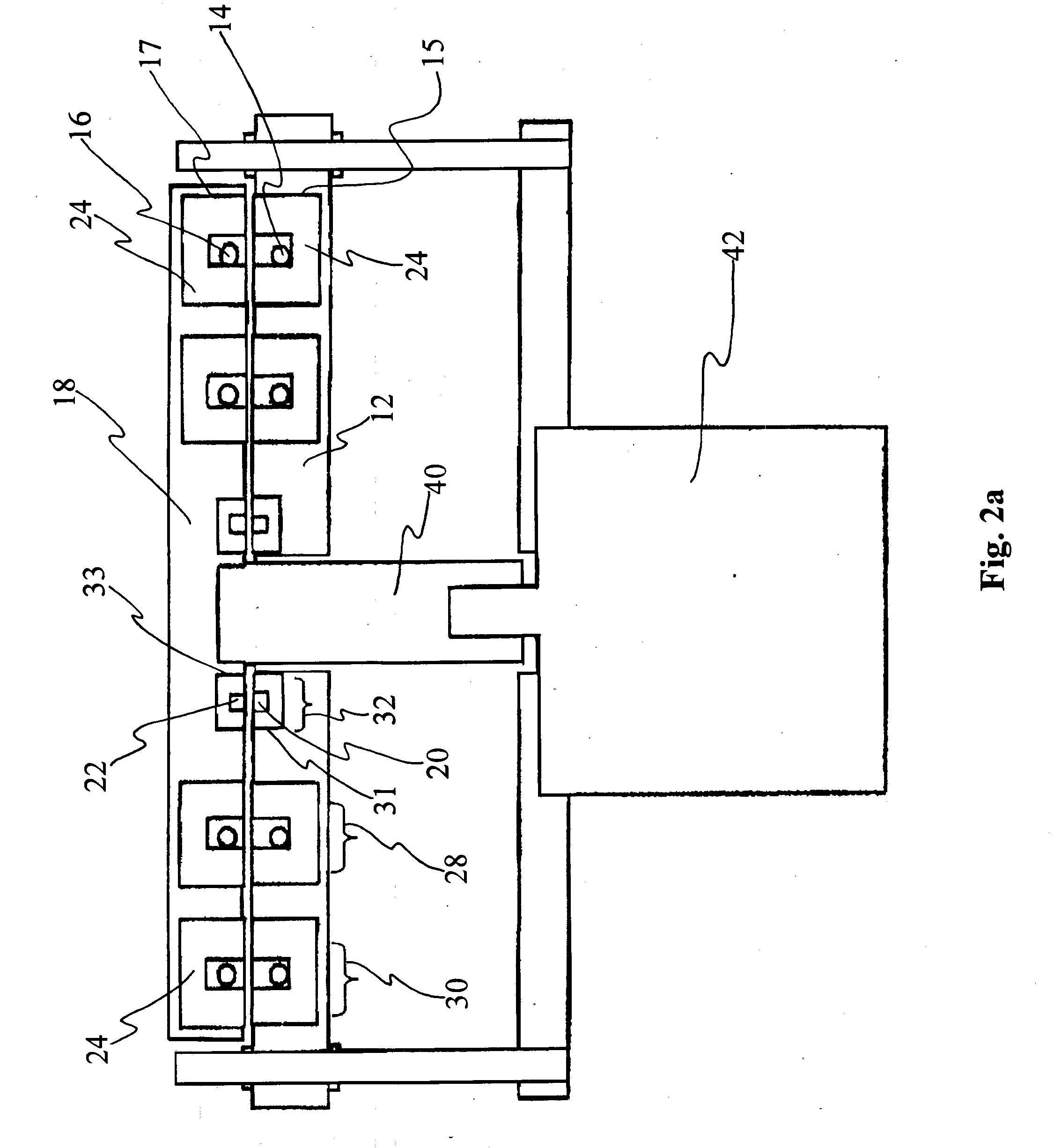Contact-less power and signal transmission device for a high power level transformer
a transformer and contactless technology, applied in the field of transformers, can solve the problems of reduced reliability, frequent maintenance problems, special challenges of the transformer, etc., and achieve the effects of preventing heat build-up, ensuring safety, and ensuring reliability
- Summary
- Abstract
- Description
- Claims
- Application Information
AI Technical Summary
Benefits of technology
Problems solved by technology
Method used
Image
Examples
Embodiment Construction
[0032]The present invention discloses a device and a method to be used in conjunction with high power (more than 1,000 kW) electric generation and transmission, including applications involving the use of stationary or rotary transformers where power and signals must be transferred to or from a stationary or a mobile platform (e.g. high-power transformers, motors, generators, turbines, CAT-scan devices, etc.) One especially important area of application of the present invention is electrical power transfer from stator to rotor for wind-power turbines. Another promising application is “micro-turbines,” especially “micro-hydro turbines” that employ running water to provide power to a home or a running stream to provide power at a remote location. In general, the present invention facilitates power transfer under conditions that require the use of compact precisely-controlled rotary transformers.
[0033]A contactless power transfer system is provided comprising a primary member with stro...
PUM
| Property | Measurement | Unit |
|---|---|---|
| frequency | aaaaa | aaaaa |
| voltage | aaaaa | aaaaa |
| power | aaaaa | aaaaa |
Abstract
Description
Claims
Application Information
 Login to View More
Login to View More - R&D
- Intellectual Property
- Life Sciences
- Materials
- Tech Scout
- Unparalleled Data Quality
- Higher Quality Content
- 60% Fewer Hallucinations
Browse by: Latest US Patents, China's latest patents, Technical Efficacy Thesaurus, Application Domain, Technology Topic, Popular Technical Reports.
© 2025 PatSnap. All rights reserved.Legal|Privacy policy|Modern Slavery Act Transparency Statement|Sitemap|About US| Contact US: help@patsnap.com



